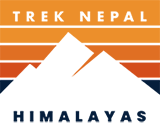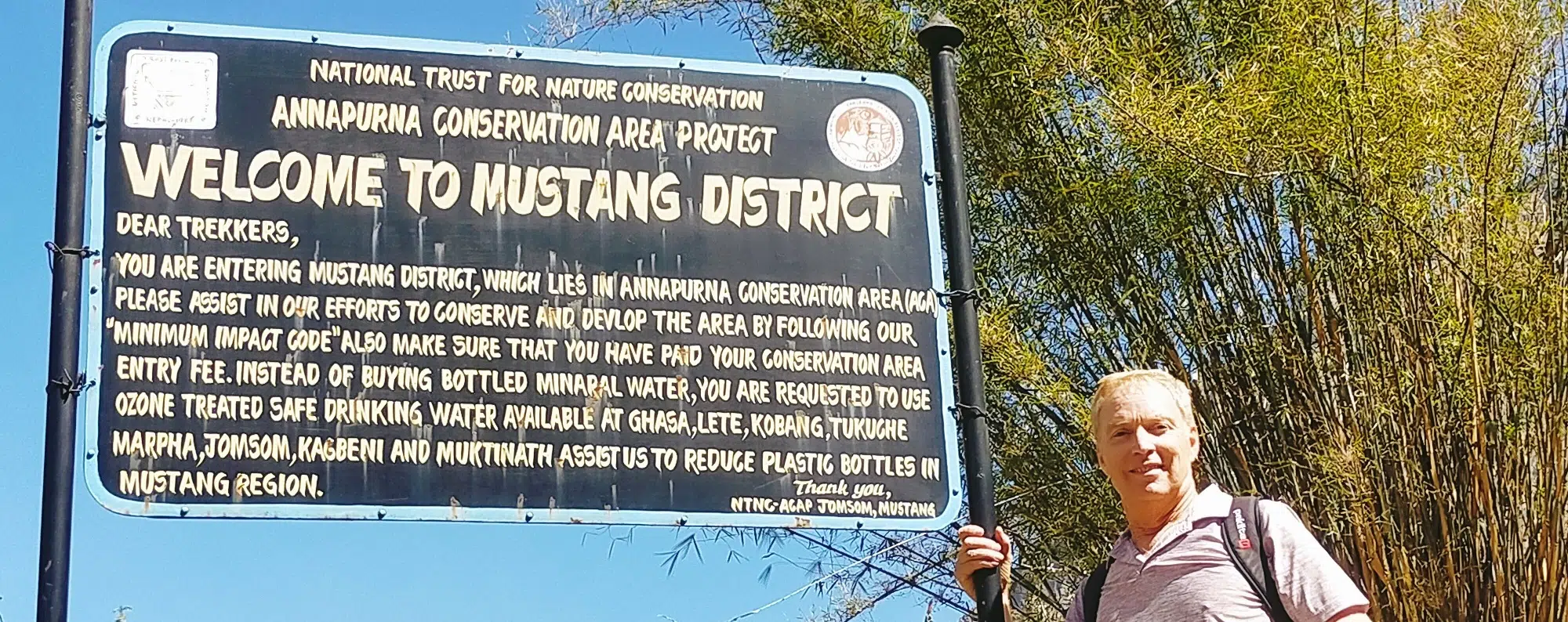Upper Mustang Trek
based on 178 reviewsOverview of Upper Mustang Trek
Why Choose the Upper Mustang Trek?
Embarking on an Upper Mustang Trek is your gateway to the mystical Himalayan Kingdom of Mustang. With options for a 12-day trek from Pokhara and a 14-day trek from Kathmandu, the Upper Mustang trek offers flexibility and adventure rolled into one.
Important Information: Upper Mustang Trekking Requirements
Upper Mustang is a restricted area, requiring a special permit and a licensed guide for entry. Our Upper Mustang Tour Package takes care of these necessities, making your trekking in Nepal a smooth experience.
Your Upper Mustang Trek Itinerary
Pick Your Journey
- 12-Day Trek from Pokhara: Starting with a flight to Jomsom from Pokhara, you’ll trek through the captivating Upper Mustang Valley.
- 14-Day Trek from Kathmandu: Opt for a more extended experience, allowing more time for exploration and acclimatization during your trek to Mustang.
Tailored Mustang Trekking Packages
We offer an assortment of Mustang Trekking Packages designed to suit every traveller’s needs. Select from a range of options, including budget-friendly and luxury packages.
The Visual Grandeur of the Upper Mustang Trek
Your Mustang trek will expose you to stunning landscapes that blend desert-like terrains with magnificent mountain views. It’s a visual feast that sets the Upper Mustang Trek apart from other treks in Nepal options.
Seize Your Adventure: Contact us to book your tailor-made Upper Mustang Trekking Package today!
Itinerary of Upper Mustang Trek
Start your Upper Mustang Trekking adventure as you land in Kathmandu, Nepal’s capital. Our team will greet you and facilitate a smooth transition to your accommodation.
Your first day in Nepal is dedicated to securing the special permit required for Upper Mustang trekking. Our Upper Mustang trek package includes a thorough trekking orientation.
Depart Kathmandu for a mesmerizing drive to Pokhara, often considered the launching pad for various trekking in Nepal, including the Mustang trek.
Board a morning flight to Jomsom. Begin your trek to Kagbeni, the official entry point of the restricted Upper Mustang area.
Embark on your trek from Kagbeni to Chele, witnessing the transition from greenery to the unique desert-like landscapes of Upper Mustang.
Continue your Upper Mustang trek to Syangmoche. Capture unparalleled views of the Himalayan Kingdom of Mustang.
The Upper Mustang tour package offers a trek from Syangmoche to Ghami, an opportunity to experience Tibetan culture.
Trek from Ghami to Charang, another beautiful settlement in the Upper Mustang Valley, where you can explore ancient monasteries.
Arrive at Lo Manthang, the walled city that serves as the capital of the Himalayan Kingdom of Mustang.
Explore the royal palaces and monasteries in Lo Manthang. Our Mustang trekking package offers guided tours of these historical sites.
Trek from Lo Manthang to Dhakmar, passing through unique desert-like terrains characteristic of the Mustang trekking experience.
Descend towards Ghiling, capturing panoramic views synonymous with trekking in Nepal’s Upper Mustang region.
Wrap up your Upper Mustang Trek as you head towards Chuksang, another idyllic village in the valley.
The last day of your trek leads you back to Jomsom, where you’ll prepare for your departure.
Fly back to Pokhara, marking the end of your trekking in Nepal’s Upper Mustang region.
Drive back to Kathmandu and explore the city or relax before your onward journey.
Take a day to explore Kathmandu’s rich culture and heritage before concluding your Mustang Trek.
Say your farewells as you depart for your homeland, completing your 17-day Upper Mustang Trek.
Added Insights
What's Included in Your Upper Mustang Trek
What's Included?
Accommodation
- 3 Nights in Kathmandu: Enjoy a comfortable stay in a 3-star category hotel on a Bed and Breakfast (BB) basis.
- 2 Nights in Pokhara: Relax in a cozy BB accommodation in the scenic city of Pokhara, an integral part of your Upper Mustang trek itinerary.
Transport
- Kathmandu Valley Sightseeing: Immerse yourself in the cultural richness of Kathmandu with a guided tour by car, van, or microbus.
- Kathmandu-Pokhara and Pokhara-Kathmandu Transport: Travel hassle-free between these two major cities via a tourist bus.
- Pokhara to Jomsom and Jomsom to Pokhara Flights: Your package includes convenient flights between Pokhara and Jomsom, the starting and ending points of your trek in the Upper Mustang Valley.
Trek Essentials
- Experienced English-Speaking Guide: Gain insights and safe navigation through your sightseeing and trekking in Nepal, thanks to our qualified guide.
- Porter Services: A porter will be provided for every two trek participants, making your trek more enjoyable.
- Trekking Route Map: Navigate confidently with our detailed trekking route map.
- First Aid Kit: A fully-equipped first aid kit is always available for your safety during the trek.
Permits and Documentation
- TIMS and Special Permit Cards: Your package covers all the necessary TIMS (Trekkers’ Information Management System) and restricted area permits for your Upper Mustang trekking adventure.
Extras
- Bed and Breakfast During the Trek: Make each day’s journey more pleasant with a comfortable bed and a hearty breakfast.
- Nepali SIM Card: Stay connected throughout your trek with a complimentary Nepali SIM card.
What's Excluded?
Visas and Documentation
- Nepal Visa: Obtaining a Nepal visa is your responsibility and is not included in the package.
Insurance
- Travel Insurance: It’s highly recommended to have comprehensive travel insurance for trekking in Nepal, and this is not part of the package.
Food and Beverages
- Lunch and Dinner: While breakfast is covered, lunch and dinner are not included during the trek.
- Personal Beverages: Drinks other than the ones provided in your bed and breakfast are not covered.
Gratuity
- Tipping for Guide and Porter: Tips for the hardworking guide and porter are not included but are highly appreciated.
Personal Expenses
- Personal Laundries: The cost for laundry service, if needed, is not included.
- Anything Not Mentioned Above: If it’s not in the inclusions list, assume it’s not covered in the package.
Ultimate Guide to Upper Mustang Trek
Best Seasons for the Upper Mustang Trek
One of the remarkable aspects of the Upper Mustang Trek is its versatility in offering year-round trekking opportunities. Located in a rain-shadowed part of Nepal, the area is mainly unaffected by seasonal monsoons. Here’s a seasonal breakdown:
Spring (March to May)
Spring is one of the most popular seasons for Upper Mustang Trekking. The weather is generally stable, and the moderate temperatures make it an ideal time for trekking in Nepal. You’ll witness blossoming flora and clear skies, offering stunning views of the Himalayan peaks.
Summer (June to August)
Summer in Upper Mustang is unlike most trekking destinations in Nepal. While the rest of the country experiences heavy monsoons, Upper Mustang remains relatively dry due to its rain-shadowed geography. It’s a perfect trek in Nepal to avoid the rainy season.
Autumn (September to November)
Autumn is another peak season for the Upper Mustang Trek. Post-monsoon, the landscape is lush, and the skies are clear. Like spring, you’ll experience stable weather conditions and moderate temperatures.
Winter (December to February)
Winter brings a unique charm to the Upper Mustang Valley. Although colder, the region is still accessible and offers fewer crowds and peaceful trekking routes. Proper gear is essential during this time, but the experience is unlike any other trek in Nepal.
Permit Requirements for Upper Mustang Trekking
An important consideration when planning your Upper Mustang Trek is the necessary permits. The region falls under Nepal’s restricted areas, requiring specific documentation for entry. Here’s what you need to know:
Special Restricted Area Permit
Due to its sensitive location near the Nepal-Tibet border, Upper Mustang requires a Special Restricted Area Permit. This is separate from the usual Annapurna Conservation Area Permit (ACAP) that most treks in Nepal demand.
Annapurna Conservation Area Permit (ACAP)
In addition to the Special Restricted Area Permit, you’ll also need an Annapurna Conservation Area Permit (ACAP) for your trek to Mustang. The ACAP is essential for anyone trekking in the Annapurna region, which includes Upper Mustang.
Mandatory Guide Requirement
The restricted status of Upper Mustang mandates that trekkers must be accompanied by a licensed guide. Our Upper Mustang Tour Package offers guided treks that comply with this rule, making your trekking in Nepal a hassle-free experience.
Where to Get Permits
Permits for the Upper Mustang Trek can be obtained in Kathmandu or Pokhara. Our Mustang Trekking Packages include the service of obtaining all necessary permits, allowing you to focus solely on your adventure
Accommodation Options for the Upper Mustang Trek
When you’re planning your Upper Mustang Trek, accommodations are an important consideration. Whether you opt for the basic teahouses or desire something more upscale, knowing your options enhances your trekking in Nepal experience.
Teahouse Stays
Teahouses are the most prevalent accommodation choice on the Upper Mustang Trek. Offering basic amenities, these family-run establishments are a staple in trekking across Nepal and provide an authentic touch to your Upper Mustang Trekking journey.
Camping at Extra Cost
Camping in the Upper Mustang Valley is available upon request and incurs additional charges. While less common than teahouses, camping offers an adventurous alternative for those wanting to immerse themselves in the natural surroundings during their trek to Mustang.
Guesthouses and Homestays
Upgraded from teahouses, guesthouses are available in larger villages like Lo Manthang. Some offer homestay options, giving you an intimate cultural experience in the Himalayan Kingdom of Mustang.
Limited Luxury Accommodations
Luxury options are limited but available for travelers seeking extra comfort. These options often come as part of specialized Upper Mustang Tour Packages and offer amenities like hot showers and western toilets.
Food Choices on the Upper Mustang Trek
Food is a fundamental aspect of any trekking adventure, and the Upper Mustang Trek is no exception. Whether you’re staying in teahouses or opting for other accommodations, here’s what to expect in terms of cuisine during your trek in Nepal’s Upper Mustang region.
Traditional Nepali Cuisine
The staple diet in the Upper Mustang Valley consists of traditional Nepali foods like Dal Bhat (rice, lentil soup, and vegetable curry). This hearty meal is a common offering in teahouses and provides the essential nutrients you need while trekking.
Limited Western Options
Some teahouses and guesthouses offer a limited selection of Western foods like pasta, pancakes, and pizza. These options are more prevalent in areas that see a higher number of tourists but are generally less available as you go deeper into your Upper Mustang Trekking experience.
Snacks and Beverages
Teahouses usually offer a range of snacks like cookies, chocolate, and even canned beverages. It’s advisable to carry some with you for longer trekking stretches. Packaged snacks can also be included as add-ons in certain Mustang Trekking Packages.
Special Dietary Requirements
If you have specific dietary needs, it’s best to mention them when booking your Upper Mustang Tour Package. While options may be limited, most accommodations try to cater to special dietary requirements to the best of their abilities.
Drinking Water Options on the Upper Mustang Trek
Hydration is crucial while trekking, and the Upper Mustang Trek is no different. Knowing your options for drinking water can make your trek in Nepal more comfortable and safe. Here’s what you need to know:
Tap Water
While tap water is available in most villages along the Upper Mustang Valley, it’s essential to treat it before consumption. Boiling or using water purification tablets are common methods to make tap water safe for drinking during your Upper Mustang Trekking adventure.
Bottled Water
Bottled water is readily available in teahouses and local shops. However, considering the environmental impact, it’s best to use this as a last resort. Some Mustang Trekking Packages may include bottled water as part of their offer but check for environmentally friendly options.
Water Refill Stations
A more sustainable choice is to use water refill stations that are increasingly common along trekking routes in Nepal. These stations offer treated, safe water and are usually cheaper than buying bottled water. They are a great addition to any Upper Mustang Tour Package that focuses on eco-friendly practices.
Electricity and Wi-Fi on the Upper Mustang Trek
Staying connected and powered up is an important consideration for modern-day travelers. If you’re planning a trek to Mustang, here’s what you can expect in terms of electricity and Wi-Fi during your trek in Nepal’s Upper Mustang region.
Electricity
Electricity is available in most teahouses along the trekking route, but it’s advisable to carry extra power banks or batteries for your devices. Voltage fluctuations and power outages are not uncommon. Some luxury Upper Mustang Tour Packages may include accommodations with more reliable electricity.
Solar-Powered Outlets
Many teahouses in the Upper Mustang Valley use solar power to supplement electricity needs. While not as reliable for heavy-duty charging, these are generally sufficient for basic charging needs during your Upper Mustang Trekking experience.
Wi-Fi Connectivity
Wi-Fi is available in some teahouses and guesthouses, particularly in larger villages. However, the connection is often slow and unreliable. Some Mustang Trekking Packages offer portable Wi-Fi devices as an add-on for better connectivity.
Local SIM Cards
For a more reliable connection, consider purchasing a local SIM card with data coverage. While network coverage can be spotty, this option generally offers better connectivity than teahouse Wi-Fi during your trek in Nepal.
Toilet Facilities on the Upper Mustang Trek
Understanding the available toilet options is an important yet often overlooked aspect of planning your trek in Nepal. When embarking on your Upper Mustang Trekking adventure, here’s what you need to know about toilet facilities:
Western Toilets
Many teahouses and guesthouses in the Upper Mustang Valley have upgraded to offer Western-style toilets. These are more common in areas frequented by international tourists and may also be included in premium Upper Mustang Tour Packages.
Indian Toilets
In more remote areas or older teahouses, Indian-style squat toilets are commonly available. These require a bit of getting used to if you’re unfamiliar, but they are functional and relatively clean.
En Route Facilities
While trekking between villages, toilet facilities are sparse. Many trekkers resort to using natural spots in the jungle for emergency situations. Always remember to carry toilet paper and hand sanitizer for these instances during your trek to Mustang.
Toilet Essentials
Whether you’re opting for a basic Mustang Trekking Package or a more comprehensive Upper Mustang Tour Package, it’s advisable to carry your own toilet essentials like toilet paper, wipes, and hand sanitizer.
Travel Insurance for the Upper Mustang Trek
When planning your trek to the Upper Mustang Valley, one crucial aspect that should not be overlooked is travel insurance. Here’s why it’s essential for your trek in Nepal and what it should cover:
Why It’s Necessary
Travel insurance is not just a precaution; it’s a necessity for trekking in Nepal, especially in remote regions like Upper Mustang. Unforeseen circumstances such as illness, injury, or travel interruptions can occur, and having adequate coverage ensures you’re prepared.
Medical Coverage
Ensure that your travel insurance covers emergency medical expenses, including helicopter evacuation if necessary. Given the remoteness of the Upper Mustang Trekking routes, medical facilities are sparse and may require airlifts to Kathmandu.
Trip Cancellation and Delays
Your travel insurance should also cover trip cancellations and delays. With Mustang Trekking Packages often involving tight schedules and internal flights, unexpected delays can affect your itinerary significantly.
Lost or Stolen Items
Coverage for lost or stolen personal belongings is another feature to look for in your travel insurance. This becomes particularly important if you carry expensive gear during your Upper Mustang Trek.
FAQs about Upper Mustang Trek
Yes, Upper Mustang is a restricted area. You need a special permit in addition to the Annapurna Conservation Area Permit (ACAP). Make sure your Mustang Trekking Package includes these permits or apply for them in advance.
The trek is considered moderate in difficulty. You need to be in good physical condition, but it’s not as demanding as some other trekking routes in Nepal.
Yes, a guide is mandatory for this trek due to its restricted status. Most Upper Mustang Tour Packages will include a guide.
Upper Mustang is unique in that it’s accessible year-round due to its desert-like climate. However, each season offers different experiences and challenges.
Accommodation ranges from basic teahouses to limited luxury options. Camping is available at an extra cost.
Wi-Fi is available in some teahouses, but it’s often unreliable. You may consider purchasing a local SIM card for better connectivity.
Expect traditional Nepali food, with some teahouses offering limited Western options. Special dietary requirements can usually be accommodated if specified in advance.
Pack lightweight but warm clothing, trekking boots, a first-aid kit, and personal toiletries. Check what is included in your Mustang Trekking Package offers gear rental.
Absolutely. Your travel insurance should cover emergency medical services, trip cancellations, and lost or stolen belonging
Both Western and Indian-style toilets are available in teahouses. Natural spots are used when trekking between villages.
Reviews on Upper Mustang Trek
Be first to post a review in this trip.




